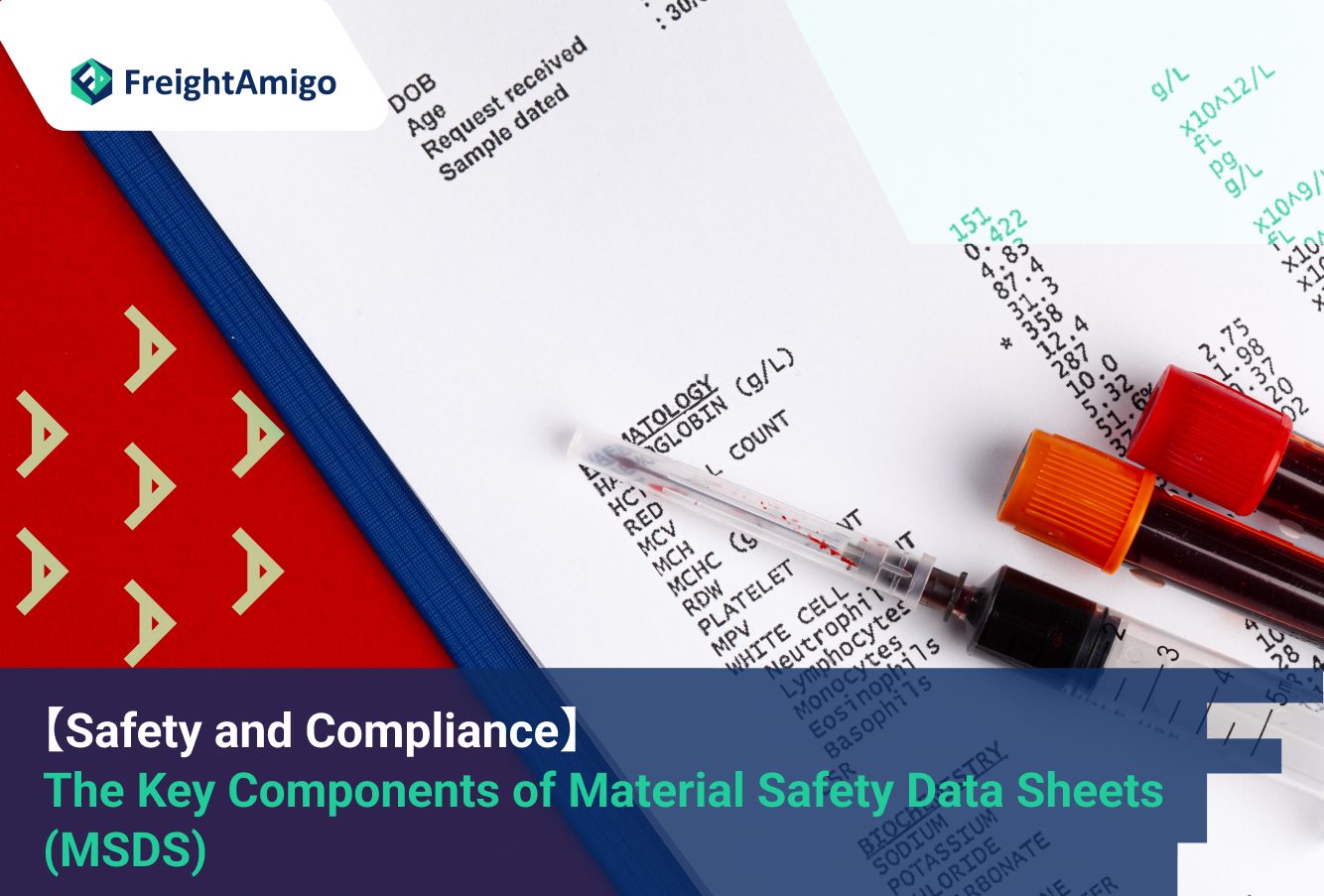Safety and compliance are of utmost importance when it comes to handling hazardous materials. In industries where the use and transportation of potentially dangerous substances are common, having accurate and comprehensive information about these materials is crucial. This is where Material Safety Data Sheets (MSDS) play a vital role. MSDS provides essential details about the properties, handling, storage, and emergency procedures related to hazardous substances. In this blog, we will explore the key components of MSDS and understand how they contribute to ensuring safety, promoting compliance, and protecting the well-being of individuals and the environment. Whether you are an industry professional, a safety-conscious individual, or simply curious about the topic, this blog will provide valuable insights into the significance of MSDS and its role in maintaining a safe and compliant working environment.
Latest update on 29 January, 2024 by Aiden Ng– Marketing Analyst at FreightAmigo
Want to compare the best Express, Air Freight, Sea Freight, Rail Freight & Trucking rates so as to have better control on cost?
Key Components of an MSDS
Identification and Hazards
The first section of an MSDS includes the identification of the chemical, including its name, product identifier, and recommended use. It also provides hazard classification information, such as the chemical’s physical and health hazards, accompanied by appropriate symbols, signal words, and precautionary statements.
Composition and Ingredients
The composition section lists the chemical’s ingredients, common names, and synonyms. It may also include information about impurities or stabilizing additives that contribute to the substance’s classification. For mixtures, the concentration of health hazards is specified, and if a trade secret is claimed, the exact percentage may be withheld.
Handling and Storage Instructions
This section outlines safe handling and storage procedures for the chemical. It may also include information about substances that are incompatible with the chemical, helping workers prevent accidental reactions. Proper handling and storage are crucial to minimize the risk of accidents and ensure the chemical’s stability.
Exposure Limits and Controls
Exposure limits, such as OSHA permissible exposure limits (PEL) or ACGIH Threshold Limit Values (TLV), are specified in this section. It also highlights other recommended exposure limits and provides guidance on protective controls and personal protective equipment (PPE) necessary to minimize exposure risks.
Physical and Chemical Properties
The physical and chemical properties section describes the appearance, odor, boiling and melting points, vapor pressure, solubility, and density of the chemical. This information helps workers understand how the chemical behaves and determine appropriate handling procedures.
Toxicological Information
This section provides information about the potential health effects of exposure to the chemical, including symptoms, toxicity measurements, and carcinogenicity classification. It may reference authoritative sources like OSHA, the National Toxicology Program, or the International Agency for Research on Cancer.
Ecological and Disposal Considerations
MSDS may include information on the chemical’s impact on the environment, including ecotoxicity, degradability, and bioaccumulation potential. Proper disposal practices and recycling options are also outlined, ensuring proper waste management.
Transport and Regulatory Information
For chemicals subject to transportation regulations, this section includes the UN number, proper shipping name, transport hazard classes, packing group, and any additional precautions for transportation. Regulatory information identifies specific safety, health, and environmental regulations applicable to the chemical.
Other Information
The final section of an MSDS includes additional relevant information, such as the date the sheet was prepared or modified. It serves as a reference for users to determine the currency and relevancy of the information provided.
Conclusion
In conclusion, Material Safety Data Sheets (MSDS) are crucial documents for businesses that deal with hazardous chemicals. The key components of MSDS include comprehensive information about the properties, hazards, and safe handling procedures for each chemical, ensuring the safety of workers and the environment. Compliance with regulatory requirements and easy accessibility of MSDS enable businesses to effectively manage risks and protect their employees. By prioritizing the use of MSDS, businesses can create a safer work environment and minimize the potential for accidents and illnesses related to chemical exposure.
There are different options for cargo transportation. If you want to choose the most convenient and suitable solution, it is best to have the full support of logistics experts! If you are planning to ship goods overseas, please go to the FreightAmigo page for inquiries.
If you have any inquiries on logistics/supply chain, feel free to contact FreightAmigo now:
Chat with us online | Hotline: +852 28121686 | WhatsApp: +852 27467829









































